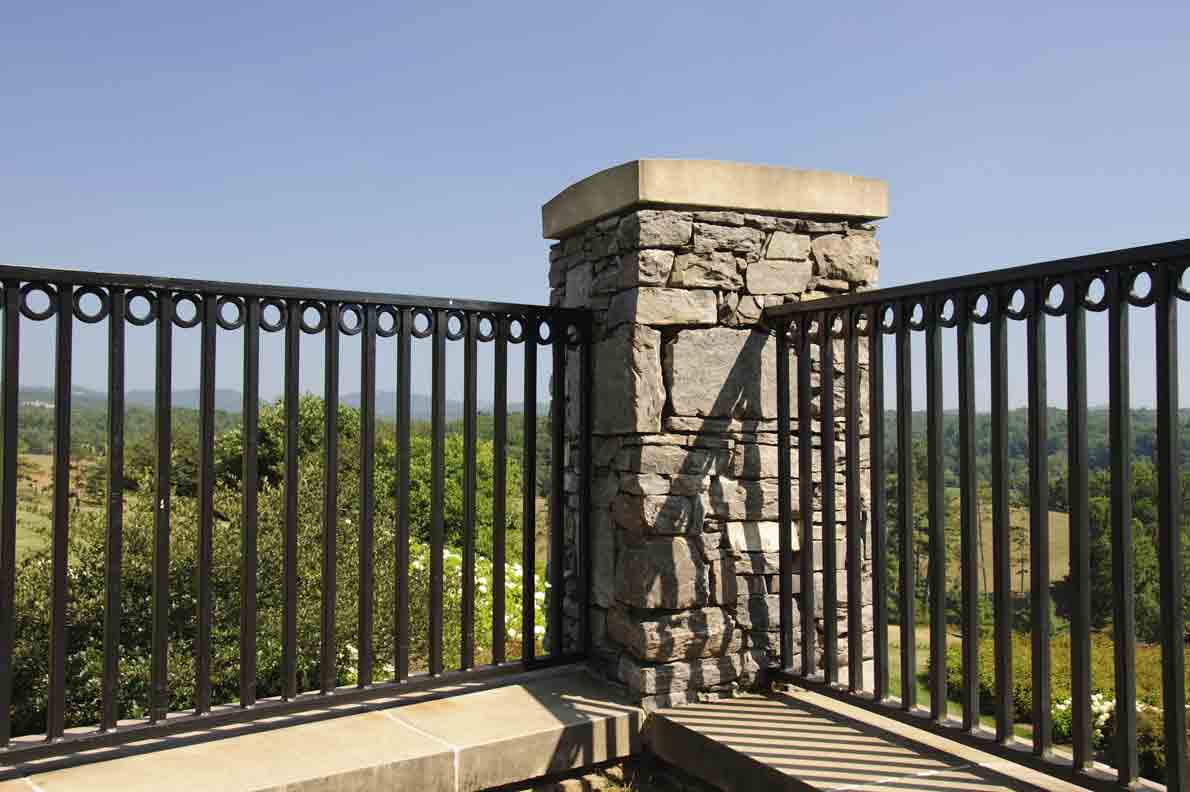A Closer Look at Iron, a Preferred Fencing Material
- By Admin
- •
- 27 May, 2017
- •

Iron fences are known for their longevity, durability, and low maintenance requirements, but how much do you know about the iron itself? Iron is such an intriguing substance with a rich history and unique properties. Read on to discover seven facts that will enhance your appreciation for this useful metal fencing material.
1. Iron Is an Elemental Metal
Unlike steel, which is an alloy made from several metals, iron is an elemental metal. In other words, it is an element on the periodic table, and iron substances are composed of iron atoms. The chemical symbol for iron is Fe, and iron is important in a wide array of chemical processes, including the Haber process by which ammonia is produced.
2. Iron Is the Fourth Most Abundant Element on Earth
Most of the iron in the earth's crust is found in a rock called hematite. To purify and extract the iron, workers heat the hematite in a blast furnace along with carbon and calcium carbonate. Researchers suspect that the core of the earth is composed mostly of iron, though of course there is no way to verify this for certain.
3. Rust Is How Iron Corrodes
Many metals corrode, which means the molecules of metal on the surface of that piece of metal react with air to form another substance. Rust is the form of corrosion experienced by iron. It forms when iron reacts with the oxygen in the air. Chemically, rust is iron oxide; each molecule consists of two iron atoms and three oxygen atoms.
Water is required for the reaction by which oxygen and iron form rust, which is why protecting your iron fence from moisture slows down rust formation.
4. Iron Has Been Used for Thousands of Years
Historians believe that people started shaping iron into various tools about 6,000 years ago. It is an easier metal to work with than aluminum, since you must use electricity and extrude aluminum to shape it. Iron can be heated and pounded into various shapes; this partially accounts for its popularity over the years. Because of this feature, fence makers can shape iron into a wide array of forms and features.
5. Iron Is Magnetic
Iron, nickel, and cobalt are the most common elements that have magnetic properties. Magnets have been incredibly useful over the course of human history. They're important for creating electric motors and generators, along with television screens, trains, and computers. Without magnets, there would be no compasses, and scrap yards would have to think of another way to separate metals.
6. Iron Came to the U.S. in the 1600s
Almost as soon as the colonists arrived in North America, they began making iron to construct fences and other building elements. The first American forge opened in Massachusetts in 1644 and was known as Saugus Ironworks. Iron became even more popular during the 18th century when fencing became popular in larger cities like Charleston.
7. Cast Iron and Wrought Iron Are Different
The two are similar, but they are produced differently. Cast iron has been melted down and poured into a mold. (The melting point of iron is 2800 degrees F.) Wrought iron has
extract the iron, workers heat the hematite in a blast furnace along with carbon and calcium carbonate. Researchers suspect that the core of the earth is composed mostly of iron, though of course there is no way to verify this for certain.
3. Rust Is How Iron Corrodes
Many metals corrode, which means the molecules of metal on the surface of that piece of metal react with air to form another substance. Rust is the form of corrosion experienced by iron. It forms when iron reacts with the oxygen in the air. Chemically, rust is iron oxide; each molecule consists of two iron atoms and three oxygen atoms.
Water is required for the reaction by which oxygen and iron form rust, which is why protecting your iron fence from moisture slows down rust formation.
4. Iron Has Been Used for Thousands of Years
Historians believe that people started shaping iron into various tools about 6,000 years ago. It is an easier metal to work with than aluminum, since you must use electricity and extrude aluminum to shape it. Iron can be heated and pounded into various shapes; this partially accounts for its popularity over the years. Because of this feature, fence makers can shape iron into a wide array of forms and features.
5. Iron Is Magnetic
Iron, nickel, and cobalt are the most common elements that have magnetic properties. Magnets have been incredibly useful over the course of human history. They're important for creating electric motors and generators, along with television screens, trains, and computers. Without magnets, there would be no compasses, and scrap yards would have to think of another way to separate metals.
6. Iron Came to the U.S. in the 1600s
Almost as soon as the colonists arrived in North America, they began making iron to construct fences and other building elements. The first American forge opened in Massachusetts in 1644 and was known as Saugus Ironworks. Iron became even more popular during the 18th century when fencing became popular in larger cities like Charleston.
7. Cast Iron and Wrought Iron Are Different
The two are similar, but they are produced differently. Cast iron has been melted down and poured into a mold. (The melting point of iron is 2800 degrees F.) Wrought iron has simply been heated until it becomes pliable and is then hammered and bent into various shapes.
Fences and other iron goods are generally made from wrought iron rather than cast iron. Wrought iron is easier to shape and better at resisting fatigue.
Though iron has been largely replaced by steel in major building construction projects, its beauty still shines through in wrought iron fences. If you would like one of these beautiful fences for your own property, contact Capitol City Iron Works. We have a great appreciation for this metal, and we create unique fences, balcony rails, handrails, and more.
In property enhancement, ornamental fencing is an essential element that adds aesthetic appeal and fortifies security. Choose iron fencing for curb appeal!
Your Juliet balcony needs more than just good looks to keep it safe and sound. Explore three essential reinforcements to fortify your Juliet balcony.
Do you need to add stairs to a building? Read our blog to learn about a few of the staircase options you can pick from and their benefits.
Iron fencing stands out as a timeless and versatile option for guarding any property. Learn about the advantages of iron for fences.
You want to choose your fence carefully — especially since you have so many options. Learn about what factors to consider when you select a fence.
A Juliet balcony is the improvement feature your house needs. Read this blog to learn just why you need a Juliet balcony in your home.
Ironwork makes a beautiful decorative addition to any home. Learn just a few ways to add this beautiful fixture to your home for beauty and value.
If you are looking to equip your property with an iron fence, read this blog to learn what will impact the cost of your fencing project.








